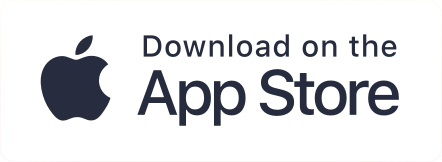Abra a unique, all-in-one, crypto wallet that allows users to exchange between 30 cryptocurrencies, 50 fiat currencies, and the BIT10 crypto index.
More assets will be added in the future, but in the meantime, we pulled together this quick guide to provide an introduction to the cryptoassets currently available on the app.
Bitwise 10 Crypto Index | BIT10
The BIT10 is the world’s first easily accessible crypto index available to everyone, everywhere. Launched in October 2018, the BIT10 gives investors exposure to the top 10 cryptocurrencies that also meet the criteria developed by Bitwise Asset Managment. Bitwise rebalances the index every month to optimize for upside. Learn more.
Bitcoin | BTC
Launched in 2009, Bitcoin is the first widely-adopted cryptocurrency. Bitcoin was developed to create a secure and trusted network that makes peer-to-peer financial transactions possible. The Bitcoin network is globally distributed and decentralized. Bitcoin’s ledger is constantly updated by a mining process that verifies transactions and creates new coins. Learn more.
Ethereum | ETH
Launched in 2015, Ethereum is a blockchain designed to support the building of decentralized applications. Individual units of Ethereum’s cryptocurrency are called ether. Learn more.
XRP | XRP
Ripple is the name of the company founded in 2012. They have created what is known as the Ripple protocol, as well as the XRP token. Ripple’s goal is to create a global, enterprise-scale blockchain solution for handling payments across borders with no chargebacks. This type of service is designed primarily for banks, payment providers, and other financial institutions. Learn more.
EOS | EOS
The development of EOS was announced in May of 2017. Through an ICO the project raised $4 billion before launching in July 2017. The blockchain is being built to be able to host and run decentralized applications faster and more cheaply than existing blockchain infrastructure. Also unique, the system will be governed by a delegated proof-of-stake model. Learn more.
Stellar Lumens | XLM
Launched in 2014 by the nonprofit Stellar Development Foundation, the Stellar network is designed to create financial infrastructure for developing economies by enabling low-cost transactions. Units of Stellar are called lumens and enable micro-transactions and allow different financial platforms to become compatible. Learn more.
Bitcoin Cash | BCH
Created as a hard fork of Bitcoin in August 2017, Bitcoin Cash is designed to increase block size (which increases the number of transactions that can be processed while reducing associated fees) to encourage its use as a form of digital cash-like payment. The hard fork continues to be controversial within Bitcoin’s development community. Learn more.
Litecoin | LTC
Litecoin was launched in 2011 as a faster and cheaper alternative to Bitcoin. Litecoin is a fork, or modification, of Bitcoin’s network, and it is more cost-effective than Bitcoin to use for everyday transactions. Learn more.
Cardano | ADA
Cardano is a layered blockchain that is designed to bridge the gap between emerging cryptocurrencies and traditional financial infrastructure. Cardano’s layered architecture allows for quick customization, upgrades, and scaling. Individual units of Cardano’s cryptocurrency are called ada. Learn more.
Monero | XMR
Launched in 2014, Monero is a privacy-centric coin and blockchain. Like Bitcoin, Monero uses a proof-of-work system to maintain its ledger and create new coins. Monero’s transactions are cloaked by algorithms that protect user identity and transaction details. Learn more.
Tron | TRX
Founded in 2017, Tron is a decentralized blockchain platform that is designed to make file sharing and storage easier for the global entertainment industry. The goal is to change the economics of content sharing by connection content producers and consumers in a distributed manner. Individual units of Tron are called Tronix. Learn more.
Dash | DASH
Launched in 2014 as a fork of Bitcoin, Dash is trying to make smaller financial transactions possible on blockchain. Dash is also privacy-focused, and obscures details of users’ transactions, making them difficult to track or trace. Learn more.
Neo | NEO
Rebranded as NEO in 2017, and previously known as Antshares, NEO is focused on building a distributed smart economy, organized by digital assets, the verification of digital identities, and smart contracts. Learn more.
Ethereum Classic | ETC
Ethereum Classic is the original version of the Ethereum blockchain, which was forked in July 2016 to undo a digital heist of $50 million of ether (in 2016 values). Part of the community that supported recovering the hacked funds by reversing the transactions on the blockchain supported the fork that is now known as Ethereum. Proponents of maintaining the immutability of the project created Ethereum Classic. Learn more.
NEM | XEM
Nem is a private blockchain system designed for companies and organizations that need to complete high volume and rapid transactions. Learn more.
Zcash | ZEC
Launched in 2016, Zcash is another privacy-oriented blockchain that is a fork of the Bitcoin protocol. Zcash is based on zero-knowledge proofs, which protect user security and also enhance fungibility. Learn more.
Dogecoin | DOGE
Created in 2013 and considered one of the original altcoins, Dogecoin was created as a fun, open-sourced peer-to-peer payment cryptocurrency. It has been widely used for tips on the internet. Relying on the scrypt algorithm, as Litecoin does, Dogecoin is not resource-intensive to mine. So far over 100 billion Dogecoins have been mined and are in circulation. Learn more.
Ox Protocol | ZRX
The 0x (pronounced “Zero X”) protocol is designed as a decentralized exchange where users can trade tokens that are built on Ethereum (ERC20 tokens). Learn more.
OmiseGo | OMG
OmiseGO is an offshoot of a payments company based in Thailand. After an Initial Coin Offering in 2017, OmiseGO launched as a platform that will allow different blockchains to interoperate with one another. The goal is to enable payments, trades, and other digital and financial transactions. OmiseGo is based on Ethereum. Learn more.
Bitcoin Gold | BTG
Launched in 2017, Bitcoin Gold is a hard fork of Bitcoin. Bitcoin Gold developers selected Equihash as the coin’s mining algorithm. The goal is to distribute mining power by making it possible to mine Bitcoin Gold on ordinary computers with graphics processing units (GPUs), instead of complex and expensive mining hardware. Learn more.
Qtum | QTUM
Launched in 2017, Qtum calls itself the world’s first blockchain made ready for business. Qtum can be best thought of as a hybrid between Bitcoin and Ethereum, taking good parts from both, and creating a new and accessible place for businesses to launch distributed applications built on smart contracts. Learn more.
DigiByte | DGB
Launched in 2014, DigiByte is designed as a fast blockchain that focuses on developing infrastructure for decentralized payment systems and decentralized app development. Learn more.
Verge | XVG
Originally launched as DogeCoinDark in 2014 and rebranded Verge in 2016, the project is building a privacy-focused blockchain that can be used for everyday transactions. Learn more.
Basic Attention Token | BAT
The Basic Attention Token is part of a larger ecosystem looking to change the dynamics of how internet advertising works. The token, which runs on the Ethereum blockchain, is trying to monetize people’s attention and change the relationship between internet publishers, consumers, and advertisers. Learn more.
Golem | GNT
Launched in April 2018, Golem is a way to share computing power on the Ethereum blockchain, with the goal of creating a shared and distributed global supercomputer. Golem’s tokens are called Golem Network Tokens. Learn more.
Augur | REP
Launched in 2018, Augur is a decentralized oracle and prediction market that is built on top of the Ethereum blockchain. Augur’s token is called rep, which is short for reputation. Learn more.
Stratis | STRAT
Stratis is a proof-of-stake platform that is designed to help businesses and organizations implement blockchain technologies using a “blockchain-as-a-service” model. Learn more.
Status | SNT
Status is designed to turn a user’s mobile phone into a lightweight node for the Ethereum blockchain. This allows increased accessibility and functionality for Ethereum and allows a user to easily interact with decentralized applications. Learn more.
Lisk | LSK
Launched in 2016, Lisk is designed as a modular blockchain platform where developers can build sidechains for specific functions but that still run on the platform. Learn more.
Vertcoin | VTC
Created in 2014 as an alternative to other cryptocurrencies, Vertcoin seeks to keep mining simple and affordable. The project was created to address concerns over the increasingly complex and expensive hardware necessary to mine other forms of cryptocurrency. Learn more.
Altcoin guide
If you are looking for more info on some of the coins listed on Abra, please consider checking out our Ultimate Altcoin Guide. The 35-page guide contains more background and details about how these cryptocurrencies work, and what problems they are trying to solve.
About Abra
Established in 2014, Abra is on a mission to create a simple and honest platform that enables millions of cryptocurrency holders to maximize the potential of their assets. Abra enables both individuals and businesses to safely and securely buy, trade, and borrow against cryptocurrencies – all in one place. Abra’s vision is an open, global financial system that is easily accessible to everyone.
Why Abra
Based in the United States, Abra is available in over 150 countries and makes it easy to convert between crypto and a wide variety of local fiat currencies. With over 2MM customers, $7B in transactions processed, and $1.5B in assets under management, Abra continues to grow rapidly. Abra is widely loved and trusted – in April 2022, pymnts.com reviewed and rated Abra amongst the top 5 most popular crypto wallets in the market. Abra is backed by top-tier investors such as American Express Ventures and First Round Capital.
How Abra Protects Your Funds
Abra places clients’ financial objectives and security first. Abra practices a culture of risk management across all levels and functions within the organization.
Abra employs a state-of-the-art enterprise risk management framework that comprises a comprehensive set of policies, procedures, and practices detailing all applicable risk-related objectives and constraints for the entirety of the business. Abra has instituted a complete set of requisite systems and controls that continuously enforce these policies, procedures, and practices to manage all operations, including credit and lending. Abra’s independent Risk Committee comprises experienced compliance, risk, securities, and fraud operations professionals with backgrounds in industries ranging from traditional and digital assets banking, payments, remittance, to fintech.
Please visit our FAQ to learn more.




blockchain development norway
1753 days agoVery good article shared with us. Keep sharing useful and informative post like this.